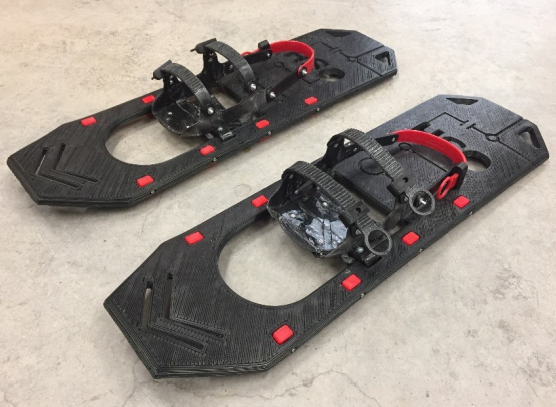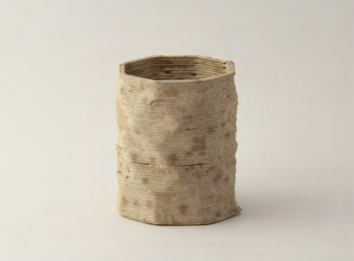Researchers from UNIDEMI at the Universidade NOVA de Lisboa in Portugal took note of the fact that, while 3D printing could serve as a key technology in a circular economy, there is not yet significant discussion of this possibility in the additive manufacturing (AM) industry. To help improve the discourse related to this topic, Inês A. Ferreira, Radu Godina and Helena Carvalho published “Waste Valorization through Additive Manufacturing in an Industrial Symbiosis Setting (PDF)” in the journal Sustainability.
AM already has some potentially sustainable characteristics, such as theoretically less waste generated compared to subtractive processes, as well as the ability to reduce physical inventory for manufacturers, the potential to produce goods locally, and the ability to extend the life of products through the fabrication of spare parts. Also of key importance is the possibility of designing more efficient goods.
Less frequently emphasized is the potential to use 3D printing in symbiosis with a larger industrial ecosystem. In a circular economy or industrial symbiosis, one industrial operation’s trash is another one’s treasure, with waste from one being used in as a production input in the other. AM is suited for such an arrangement because reclaimed and recycled materials can often be leveraged as 3D printing feedstocks.
 The Industrial Symbiosis Network of Norrköping, Sweden. Image courtesy of Linkoping University.
The Industrial Symbiosis Network of Norrköping, Sweden. Image courtesy of Linkoping University.The authors of this paper really attempted to establish the foundation for discourse around 3D printing in a circular economy, discovering early on that the topic was only addressed in a minor or tangential manner. Therefore, to begin their research, they began by searching out scholarly articles that even discuss the relationship between AM and industrial symbiosis or a circular economy.
In total, they gathered a final sample of 32 documents, all of which focused on at least one of the 4Rs (reduce, reuse, recycle, recover). 26 of these focused on the “R” corresponding to “recycle.” Only five of the documents explored industrial symbiosis networks in the 3D printing industry by exchanging resources.
Only five focused on waste as secondary raw materials that could be used as input for different AM processes, three of which looked at material extrusion, one at selective laser melting and one at binder jetting. Three considered the use of plastic waste as material input; one considered scrap feedstock as a material input, and one document mentioned the use of locally produced waste.
Ultimately, the researchers pulled out the aforementioned five studies to highlight:
- In “Green fab lab applications of large-area waste polymer-based additive manufacturing,” the authors conceived of the possibility of Green Fab Labs that could serve as recycling centers for converting plastic waste into goods for the community.
 Finished snowshoes made by the researchers of the Green Fab Lab concept.
Finished snowshoes made by the researchers of the Green Fab Lab concept.- “Local and recyclable materials for additive manufacturing: 3D printing with mussel shells” considered the use of mussel shell waste, which cannot normally be composted, in a 3D printing material for ceramic-like objects using binder jetting or material extrusion.
 A pot made from mussel shells, using an Ultimaker outfitted with a paste extruder. Image courtesy of Materials Today Communications.
A pot made from mussel shells, using an Ultimaker outfitted with a paste extruder. Image courtesy of Materials Today Communications.- “Mechanical Properties and Applications of Recycled Polycarbonate Particle Material Extrusion-Based Additive Manufacturing” was a study that examined the possibility of upcycling polycarbonate plastic waste for fused granular fabrication.
- In “Fused Particle Fabrication 3-D Printing: Recycled Materials’ Optimization and Mechanical Properties,” the authors compared the quality of virgin PLA pellets with recycled polymers.
- “Circular Economy Concept In Additive Manufacturing” considered the use of metal scrap for use in selective laser melting and the creation of metal powder from scrap either via gas atomization or milling.
Believe it or not, three of the five papers came from the lab of Michigan Technological University’s Joshua Pearce, an enthusiastic proponent of sustainable and open-source technologies.
The authors of this meta-study took another step and explored ways in which a symbiotic network might be cultivated from the research they examined, identifying entities that could participate to create such a network. For instance, in the Green Fab Lab piece, there were two waste streams from which the researchers drew their plastics for 3D printing consumer goods, Northwest Polymers for ABS and McDunnough, Inc. for PP. It would be possible to form a symbiotic network with these two suppliers working with the fab lab to supply items to the community.
The researchers argue that the circular economy model has a number of benefits to society, not the least of which is to have humanity live within the ecological boundaries of our planet. The authors suggest that a circular economy can also stimulate the growth of new business models and, in turn, create jobs. Naturally, to achieve this, stakeholders at multiple levels would need to work together.
Interestingly, we see countless projects in which disparate businesses collaborate with municipalities, educational institutions and more, purportedly, in order to improve the economic competitiveness of a geographical region or to re-shore manufacturing jobs. For instance, Southern Virginia has just launched a $25.5 million manufacturing center to accomplish just this task. The state of Michigan has created a program for increasing the adoption of Industry 4.0 solutions for local manufacturers.
In most cases, sustainability and ecological repair are not at the heart of these initiatives. The goal is industrial symbiosis, but with economic productivity as the focus. Neighborhood 91 in Pittsburgh begins to consider some benefits of a circular economy with the incorporation of an argon gas recovery plant on site, which can be used in the vacuum chambers of metal 3D printers.
Given the fact that so many public-private partnerships exist, it seems as though it would only take a bit more ingenuity to tailor them into circular ones where waste streams from one entity could be fed into another. The planet is currently experiencing ecological collapse and, if we want to maintain a habitable Earth in the near future, these will be the types of solutions that are required.
Subscribe to Our Email Newsletter
Stay up-to-date on all the latest news from the 3D printing industry and receive information and offers from third party vendors.
You May Also Like
Gorilla Sports GE’s First 3D Printed Titanium Cast
How do you help a gorilla with a broken arm? Sounds like the start of a bad joke a zookeeper might tell, but it’s an actual dilemma recently faced by...
Nylon 3D Printed Parts Made More Functional with Coatings & Colors
Parts 3D printed from polyamide (PA, Nylon) 12 using powder bed fusion (PBF) are a mainstay in the additive manufacturing (AM) industry. While post-finishing processes have improved the porosity of...
$25M to Back Sintavia’s Largest Expansion of Metal 3D Printing Capacity Since 2019
Sintavia, the digital manufacturing company specializing in mission-critical parts for strategic sectors, announced a $25 million investment to increase its production capacity, the largest expansion to its operations since 2019....
Velo3D Initiates Public Offering in a Bid to Strengthen Financial Foundations and Drive Future Growth
Velo3D (NYSE: VLD) has been among a number of publicly traded 3D printing firms that have attempted to weather the current macroeconomic climate. After posting a challenging financial report for 2023,...
































